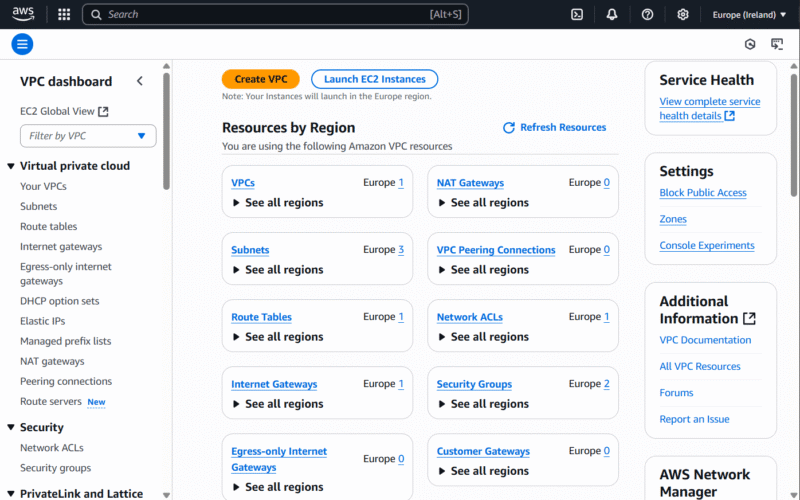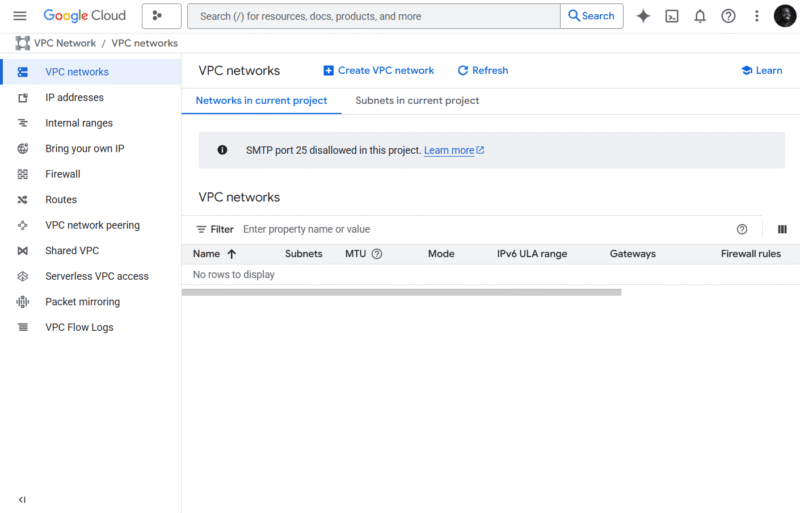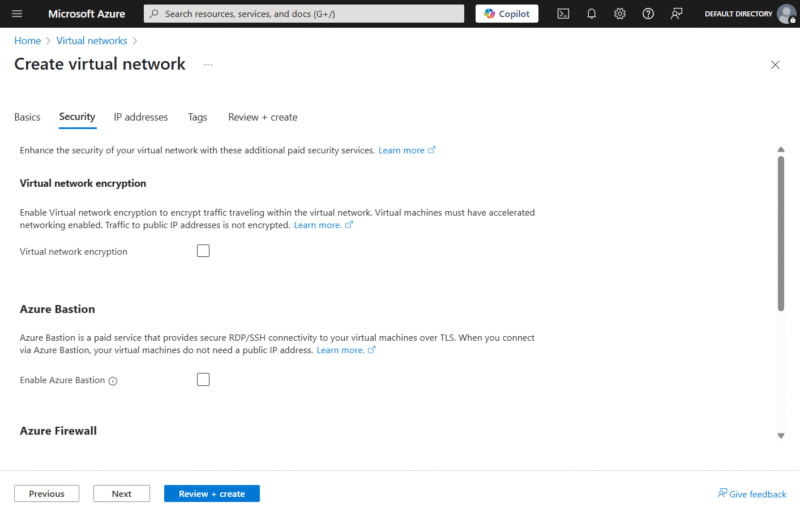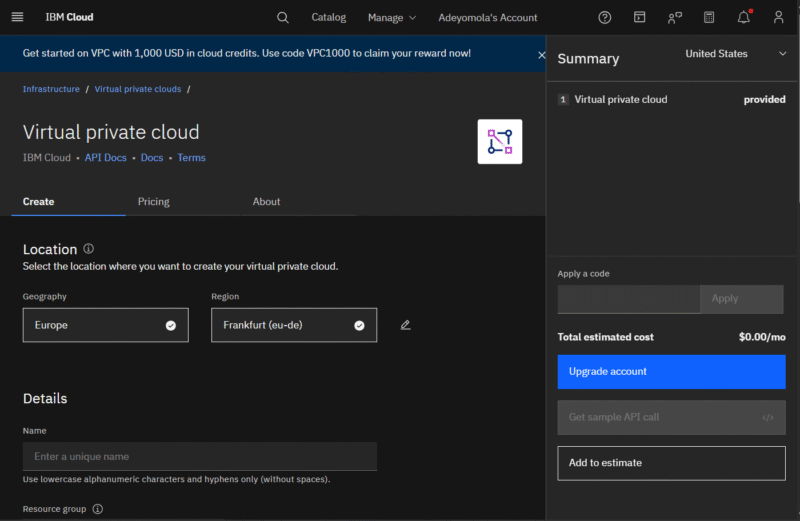What Is a VPC? Virtual Private Clouds Explained
Virtual private clouds (VPCs) solve security and privacy issues that may arise from multiple customers sharing a flat network in a public cloud. This guide explores what a VPC is while discussing its components, use cases and implementations by major cloud providers.
By default, most public cloud computing platforms offer their services through a shared tenancy model. In other words, multiple customers share resources on the same physical infrastructure; however, this presents privacy and security concerns.
To mitigate the issues that arise from sharing physical infrastructure in a public cloud, cloud providers deploy each customer’s resources in a virtual private cloud (VPC) environment. You may be wondering: What is a VPC, precisely? Dive into our guide as we explore VPCs, as well as their use cases, core components and benefits.
What Is a VPC? Meaning & Definition
VPC is short for “virtual private cloud;” it is a logically isolated environment where you can manage your public cloud resources within a controlled virtual network. It shields your resources from other accounts that share the same physical infrastructure, preventing unauthorized access.
Most public cloud providers will set up a default VPC for you when you start creating resources in your account. This allows you to start using the services immediately. However, you can also create a custom VPC if you want to modify access to your resources.
Main VPC Use Cases
While their primary function is isolation, VPCs play key roles in deploying web applications, crafting disaster recovery solutions, performing data analytics and more.
- Hosting web applications: You can deploy web applications on your VPC’s resources and configure them to be accessible from the internet. At the same time, you can have private applications running your web app’s backend.
- Hosting simple websites: When you’re not hosting tiered web applications, you can host simple websites in a VPC for better access control.
- Disaster recovery solutions: For redundancy, you can deploy resources across multiple availability zones within a VPC. This way, your workloads remain online even if resources in one zone fail.
- Data analytics and processing: While analyzing and processing data in the cloud, you must prevent unauthorized access to ensure privacy and security, especially when working with sensitive data. Taking advantage of your VPC’s “access control” features is one of many ways to achieve your desired levels of privacy and security.
- Hybrid cloud deployment: With VPCs, you can connect your private cloud environment to the public cloud while ensuring minimal internet exposure.
- Multi-cloud deployment: When combining multiple public cloud environments, you can configure access between their VPCs, ensuring that they integrate as needed.
Core Structural Components of a VPC
VPCs adopt a hierarchical structure featuring components like subnets and network interfaces. These components interact with each other using identities defined by other components, including IP addresses and route tables.
VPC Subnets and IP Addresses
VPCs use IP addressing to locate and identify their internal and external resources. They use CIDR blocks — which are IP address ranges — to assign IPs to these resources.
Subnets are a subdivision of the VPC’s network; they logically separate resources in the VPC, making them even more manageable. Subnets are commonly used to segment resources based on internet accessibility: the internet-accessible resources are assigned to public subnets, while private subnets host the others. However, you may also design subnets based on other factors, such as workloads, departments, locations and software environments.
VPC Internet Gateway and Routing
Your VPC’s internet gateway allows your resources to send network traffic to the internet. It also serves as the internet traffic’s entry point into your VPC.
To ensure that internet-bound traffic is routed correctly, your VPC declares the internet gateway as the target for that traffic. Conversely, a “local” target is specified for traffic that must remain within the VPC.
Security Groups and ACLs
As mentioned earlier, VPCs have multiple access control mechanisms, which include security groups and access control lists (ACLs). Security groups serve as a firewall at the virtual machine level, controlling traffic by defining open ports, allowed IPs, blocked IPs and so on. ACLs also control traffic, but they work at the subnet level.
Network Interfaces
Every resource in a VPC that requires connectivity has a virtual network interface. This serves as a point of communication between the resources.
VPC Endpoint
A VPC endpoint is a network interface that allows private communication between a VPC (or its resources) and other cloud services.
Key Functions of VPCs
While the primary function of a VPC is logical isolation, a VPC also allows you to choose IP address ranges for resources, control traffic flow and create subnets.
- Logical isolation: A VPC’s fundamental function is to separate every cloud account in the multi-tenant structure, ensuring privacy and security.
- Traffic routing: VPCs use route tables to direct traffic to the correct destinations. A route table is a data structure containing rules based on the IP addresses that are assigned to resources in a network. They specify the paths that packets will follow to their intended targets.
- Network access control: VPCs feature various network access control mechanisms, such as firewalls, which help you manage access to resources. In a VPC environment, you’ll typically find network access controls at the instance, subnet and VPC levels.
- Subnetting: Subnets are a VPC subdivision that allows you to group resources logically. For instance, you can place private resources in one subnet while assigning internet-accessible resources to another subnet.
- IP addressing: You can customize IP address ranges for the subnets that contain your resources using CIDR blocks. This lets you control how IPs are assigned to your resources.
Virtual Private Cloud vs Private Cloud vs Public Cloud
Virtual private clouds intersect with private clouds and public clouds, even though they are fundamentally different environments.
A private cloud is a cloud environment with resources dedicated to one user. It can be on-premises (usually your own data center), managed or hosted, and it’s generally more secure than a public cloud. Although both environments offer privacy and security, a VPC exists within a public cloud, while a private cloud does not.
A public cloud environment shares its resources across many users at the same time. While this comes with security and privacy concerns, it offers greater scalability and cost-effectiveness. Although a VPC exists within a public cloud where resources are shared, it creates a barrier between each user’s resources.
| Feature: | Virtual Private Cloud | Private Cloud | Public Cloud |
|---|---|---|---|
| Tenancy | Single tenant | Single tenant | Multi-tenant |
| Scalability | Builds on the public cloud’s scalability | Limited scalability | High scalability |
| Flexibility | VPCs share the public cloud’s flexibility | Changes require more planning, leading to less flexibility | High flexibility |
| Security | Addresses some of the public cloud’s security concerns | High security | Comes with security concerns |
| Cost | Generally cost-effective because it exists in the public cloud | Requires more investment than public clouds and VPCs | Public cloud providers leverage economies of scale to offer cheaper rates |
Benefits of Using a VPC
VPCs are vital to account-level security on public clouds. They ensure that you experience the security of private cloud deployments while enjoying the benefits of a public cloud.
- Enhanced security and isolation: To supplement your credentials, VPCs add an extra layer of security to your account when using a public cloud platform. They isolate your account’s resources, so no one can communicate with them unless you allow it.
- Scalability and flexibility: VPCs are highly scalable and flexible because they exist in public cloud environments, where you can readily provision and terminate resources.
- Cost efficiency: Private cloud deployments — especially on-premises deployments — require significant planning and investment. On the other hand, VPCs exist in public clouds that leverage economies of scale and usage-based rates. Therefore, they’re generally more cost-efficient.
Downsides of Using a VPC
While they offer enhanced security and isolation, VPCs are complex, have limits and are prone to security issues when misconfigured.
- Limits: Cloud providers often place limits on VPC resources. For instance, Amazon Web Services (AWS) limits each account to five VPCs per region and five IPv4 CIDR blocks per VPC. While you can request an increase, you may need more resources when deploying complex architecture.
- Complexity: VPCs have various components, including subnets, security groups, route tables, network ACLs and internet gateways. Each of these requires some configuration during setup. With so many components, configuring a VPC can get complex, especially for beginners or those working on complex deployments.
- Potential security issues: The complexity of VPC configuration leaves it prone to security issues as a single misconfiguration in any component could leave your resources vulnerable. Additionally, having misconfigured components could render your workloads inaccessible.
VPC Implementations by Major Cloud Providers
While the general idea behind VPCs is consistent across major cloud providers, their implementations can vary.
Amazon Web Services (AWS) VPC

in every active region.
Before VPCs, AWS resources were deployed in a shared, flat network (EC2-Classic). However, that setup came with security concerns — public IPs assigned to instances could potentially be exposed to other users within the cloud provider’s network.
As an upgrade to this shared network system, AWS introduced Amazon VPC (Virtual Private Cloud), which isolates resources by region and comes with a default quota of five VPCs per region. Amazon Virtual Private Cloud features components like security groups, route tables, route servers, gateways and IP addresses.
Google Cloud VPC

Unlike Amazon VPC, Google Cloud VPCs are not limited to regions; instead, they span the Google Cloud global network. This means that Google Cloud resources from various regions in your project can exist in the same VPC. Google Cloud VPC comes with features like firewalls, packet mirroring, IP addressing and subnets.
Microsoft Azure VPC

using Azure ExpressRoute.
VPCs in Microsoft Azure are called Virtual Networks or VNets. Like with Amazon VPC, they isolate resources regionally. By default, resources in an Azure VNet can reach the internet. You can control this traffic with features such as network security groups, public IPs, network address translation (NAT) gateways, application security groups and route tables.
In addition, if you want to connect to other VNets, you can work with options like virtual network peering and endpoints.
IBM Cloud VPC

a service without compute resources.
Like Amazon VPC and Azure Virtual Networks, IBM Cloud VPC runs at a regional level. Furthermore, it features security groups and ACLs to control traffic at the instance and subnet levels, respectively. You can use IBM Cloud Transit Gateway to connect to other VPCs, but you must use IBM Cloud Direct Link to connect to an on-premises data center.
Cloudflare VPC
Rather than regionally, Cloudflare Workers VPC isolates resources based on applications. It also comes with Workers VPC Private Link to connect your Workers VPC with external VPCs in a hybrid cloud or multi-cloud environment.
VPC Pricing Comparison
Most cloud providers won’t charge you for a VPC, but you may need to pay for certain VPC components.
AWS VPC Pricing
AWS doesn’t charge extra for VPCs or private IP addresses, but you’ll pay for components like public IP addresses, NAT gateways, network analysis and IP address managers. You must also pay to connect one VPC to another VPC or a private network.
Google Cloud VPC Pricing
Google Cloud doesn’t charge for the VPC itself, but you’ll pay an hourly rate for components like external IP addresses, internet data transfers, network telemetry, protocol forwarding and Cloud Next Generation Firewall rules.
Microsoft Azure VPC Pricing
Microsoft Azure Virtual Networks are free of charge. However, peer-to-peer connections charge per GB of data transferred. In addition, you’ll pay an hourly rate if you activate the Virtual Network TAP’s accelerated connections for enhanced performance and traffic mirroring.
IBM Cloud VPC Pricing
Data transfers within IBM Cloud’s global private network are unlimited and free. Inbound public traffic is also free, but outbound public traffic has tiered charges. Besides the data transfer charges, you must also pay for components like Transit Gateway, IP addresses and Virtual Private Endpoints for VPC.
Cloudflare VPC Pricing
Cloudflare Workers VPC launched recently, but it isn’t publicly available yet. For this reason, we couldn’t find concrete information about its pricing.
Final Thoughts
VPCs are a network-based resource isolation service offered in public clouds. While they primarily enhance privacy and security in multi-tenant cloud models, they are also vital for traffic control and are used in both hybrid and multi-cloud deployments.
In your experience, do VPCs provide most of the security and privacy you need for your projects? Compared to access control lists, how efficient are security groups when it comes to traffic management? Share your thoughts with us in the comments below. Thanks for reading.
FAQ: Virtual Private Clouds
VPC stands for virtual private cloud. It is a logically isolated virtual network that prevents your cloud resources from being accessed by other users in a multi-tenant cloud platform.
A VPC is a public cloud offering that works like a fence — it encloses your cloud resources, ensuring that no one can access them without your permission.
A virtual private cloud (VPC) is not the same as a virtual private network (VPN). A VPC is an environment that isolates resources in the cloud. On the other hand, a VPN is a service that facilitates private connections over the internet.
You need a VPC to prevent other public cloud tenants and internet users from accessing your cloud resources. A VPC is also necessary for hybrid cloud and multi-cloud deployments.


